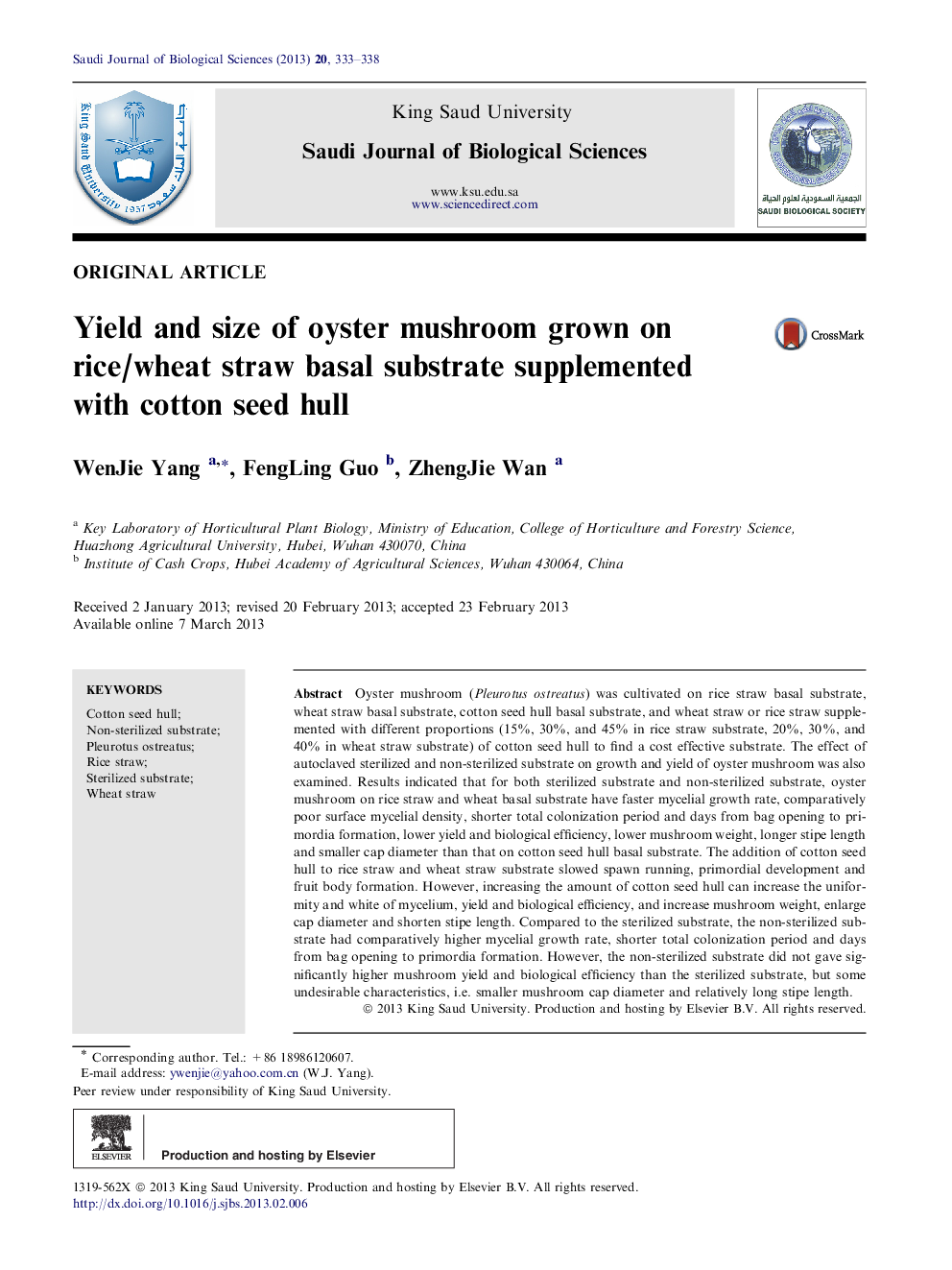| Article ID | Journal | Published Year | Pages | File Type |
|---|---|---|---|---|
| 4406248 | Saudi Journal of Biological Sciences | 2013 | 6 Pages |
Oyster mushroom (Pleurotus ostreatus) was cultivated on rice straw basal substrate, wheat straw basal substrate, cotton seed hull basal substrate, and wheat straw or rice straw supplemented with different proportions (15%, 30%, and 45% in rice straw substrate, 20%, 30%, and 40% in wheat straw substrate) of cotton seed hull to find a cost effective substrate. The effect of autoclaved sterilized and non-sterilized substrate on growth and yield of oyster mushroom was also examined. Results indicated that for both sterilized substrate and non-sterilized substrate, oyster mushroom on rice straw and wheat basal substrate have faster mycelial growth rate, comparatively poor surface mycelial density, shorter total colonization period and days from bag opening to primordia formation, lower yield and biological efficiency, lower mushroom weight, longer stipe length and smaller cap diameter than that on cotton seed hull basal substrate. The addition of cotton seed hull to rice straw and wheat straw substrate slowed spawn running, primordial development and fruit body formation. However, increasing the amount of cotton seed hull can increase the uniformity and white of mycelium, yield and biological efficiency, and increase mushroom weight, enlarge cap diameter and shorten stipe length. Compared to the sterilized substrate, the non-sterilized substrate had comparatively higher mycelial growth rate, shorter total colonization period and days from bag opening to primordia formation. However, the non-sterilized substrate did not gave significantly higher mushroom yield and biological efficiency than the sterilized substrate, but some undesirable characteristics, i.e. smaller mushroom cap diameter and relatively long stipe length.
